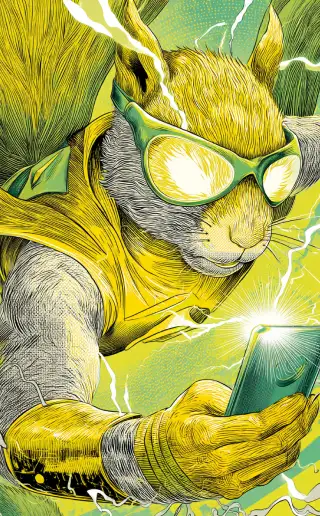Rider Mod Apk v.3.02.3.00 (Unlimited Money)
- App Name Rider
- Version 3.02.3.00
- Sizes 81 MB
- Requirements Android 7.0
- Developer Ketchapp
- Genre Arcade
- Updated Nov 08, 2025
- Platform GooglePlay
The digital landscape of mobile gaming is constantly evolving, yet certain genres consistently capture the attention of millions worldwide. Among these, skill-based arcade racers hold a special place, offering a unique blend of immediate gratification and deep challenge. These titles, often characterized by their striking visual aesthetics and intuitive controls, transcend cultural barriers, providing universally appealing entertainment. The enduring popularity of games like “Rider” exemplifies this trend, demonstrating how simplicity in design can pave the way for profoundly engaging experiences. As modern gamers seek quick, satisfying bursts of entertainment that are both accessible and rewarding, understanding the allure behind these hyper-casual yet deeply competitive games becomes increasingly relevant. This analysis delves into the core mechanics, design philosophy, and player psychology that make such games not just popular, but truly iconic within the vast ecosystem of mobile entertainment, offering insights into their sustained relevance in an increasingly crowded market and how they master the art of player retention through strategic design choices.
The Art of Simplistic Design and Engaging Mechanics
Mobile gaming success often hinges on striking the perfect balance between accessibility and depth. “Rider” masterfully encapsulates this principle, presenting a gameplay experience that is deceptively simple yet profoundly addictive. At its heart, the game employs a minimalist design philosophy, utilizing stark, neon-infused landscapes against a dark, abstract background. This aesthetic choice is not merely decorative; it serves a crucial functional purpose, directing the player’s focus entirely on the track, the obstacles, and their vehicle’s precise movements. The absence of complex environmental details allows for a cleaner visual field, enhancing readability and reducing cognitive load, which is paramount for quick-reaction gameplay on mobile devices. This streamlined visual approach is a cornerstone of effective mobile racing game design, minimizing distractions and allowing players to fully immerse themselves in the high-speed action and challenging stunts.
The core mechanic—a single-tap control scheme for acceleration and aerial rotation—is a testament to intuitive design. Players tap the screen to accelerate their vehicle, launching it over ramps and through gravity-defying loops. The magic happens in the air: continued tapping allows for spectacular flips and spins. This seemingly straightforward action introduces a layer of tactical depth, as each rotation performed in mid-air earns bonus points, incentivizing daring maneuvers and pushing players to perform ever more intricate acrobatics. However, this risk-reward system comes with a critical caveat: a poorly executed landing, often due to an excessive number of rotations or an incorrect landing angle, results in the vehicle crashing, forcing a restart. This immediate feedback loop is crucial for player learning and engagement, reinforcing the importance of precision and timing. It transforms simple driving into a thrilling ballet of physics and reflexes, where every micro-adjustment counts. This design choice taps into fundamental psychological principles. The instant gratification of successful stunts combined with the immediate consequence of failure creates a highly compelling cycle of practice and mastery. Players are constantly encouraged to experiment, learn from their mistakes, and refine their approach to each obstacle. The glowing neon lines and dynamic obstacles aren’t just visual flair; they are integral components of the challenge, constantly shifting and evolving with each level. This dynamic environment keeps the gameplay fresh and unpredictable, preventing monotony and ensuring that players remain consistently on their toes. The elegance of “Rider’s” design lies in its ability to extract maximum engagement from minimal inputs, proving that sophisticated gameplay doesn’t always require intricate control schemes or sprawling virtual worlds. For those interested in the foundational elements of engaging game design, you can learn more about effective game design principles on our site. This approach makes it a prime example of a hyper-casual title that manages to maintain an impressive level of player retention through sheer mechanical brilliance and a deep understanding of player psychology in skill-based gaming.
Progressive Challenges and the Pursuit of Mastery
The longevity of any mobile game often hinges on its ability to provide a sustained sense of progression and achievement. “Rider” excels in this area by offering a meticulously structured progression system that continually introduces new challenges, ensuring players remain invested and motivated. The game boasts an impressive array of content, featuring 32 distinct levels and over 100 unique challenges spread across 10 diverse thematic environments. This expansive content library ensures that the gameplay experience remains fresh and dynamic, with each new stage introducing novel obstacles and environmental complexities, pushing the boundaries of the player’s stunt driving capabilities. From geometric puzzles to high-speed straightaways, the variety keeps the player engaged and eager to discover what lies ahead.
Progression in “Rider” follows a classic difficulty curve: players must successfully complete easier levels before unlocking more demanding stages. This gradual escalation in complexity is vital for skill development. Early levels serve as a comprehensive tutorial, allowing players to internalize the core mechanics and develop a keen feel for the game’s unique physics. As players advance, the tracks become progressively more intricate, requiring a deeper understanding of momentum, precise timing for jumps, and strategic aerial maneuvering to achieve perfect landings. The game strategically places unexpected pitfalls and rapid turns, demanding not just sharp reflexes but also foresight and tactical planning. Successfully navigating these increasingly “crazy races” requires a holistic approach, planning out aerial maneuvers and landings several seconds in advance to maximize points and avoid catastrophic crashes. A particularly engaging feature is the freedom to revisit and choose random levels at varying difficulty tiers, from level 1 to level 3, and beyond. This non-linear exploration allows players to hone specific skills, experiment with different vehicle capabilities, or simply tackle different challenges based on their current mood or desired level of intensity. The star rating system further amplifies the drive for mastery. Players are awarded stars based on their performance—from one star for basic completion to up to five stars for exceptional runs, often tied to bonus objectives, perfect stunt execution, or incredibly fast times. This multi-tiered reward system inherently encourages replayability, compelling players to revisit completed levels to achieve a perfect score, thereby extending the game’s life cycle. The pursuit of five stars transforms a simple racing game into a challenge of ultimate precision and efficiency, fostering a deep sense of accomplishment and contributing to the overall player experience.
High achievements in “Rider” are not merely symbolic; they are directly tied to tangible in-game rewards. Completing challenges and achieving top scores in each round unlocks exclusive gifts and bonuses, reinforcing the player’s efforts and validating their skill development. This system effectively leverages the psychological principle of variable reinforcement, where intermittent and unpredictable rewards create a stronger, more persistent drive to continue playing. The profound satisfaction derived from conquering a particularly difficult level or flawlessly mastering a complex stunt contributes significantly to player retention. It’s this ingenious blend of structured progression, the continuous pursuit of personal bests, and the allure of unlocking new content that solidifies “Rider’s” standing as a highly engaging mobile racing game, appealing to both casual players looking for a quick thrill and dedicated gamers seeking a deeper, more enduring challenge in the stunt driving genre.
The Thrill of Collection and Customization
Beyond the immediate thrill of racing and the pursuit of high scores, “Rider” introduces a compelling layer of engagement through its in-game economy and customization options. The concept of collecting and customizing virtual vehicles is a potent motivator in many games, and “Rider” leverages this effectively to enhance player satisfaction and retention. After each successful run, players are rewarded with diamonds, the primary in-game currency. These diamonds are not just abstract points; they are a tangible representation of effort and skill, directly linked to unlocking new and exciting content. This direct correlation between performance and reward strengthens the gameplay loop and provides clear objectives for players.
The game’s virtual garage features an impressive collection of over 40 unique and aesthetically distinct supercars. Each vehicle boasts its own visual style, ranging from sleek, futuristic designs adorned with vibrant neon accents to more quirky and unconventional models, ensuring there’s a vehicle to suit every player’s taste. The desire to “conquer” these fast cars becomes a significant long-term goal for players. Starting with basic models, players can invest their accumulated diamonds to acquire progressively more expensive and visually striking vehicles. The price of a new car, such as an entry-level purchase for 600 diamonds, serves as a clear benchmark, driving players to continuously engage with the game and perform well to accumulate the necessary currency. This continuous cycle of playing, earning, and spending creates a rewarding loop that extends far beyond the immediate gratification of completing a single level, providing a consistent sense of purpose within the “Rider” game world. The thrill of acquisition is further augmented by the element of surprise. At specific intervals, or as part of daily login bonuses, players are presented with random gift boxes. These boxes contain valuable rewards, ranging from boosts and additional diamonds to potentially unlocking rare vehicle parts or even entirely new cars. The unpredictability of these gifts adds an exciting layer of anticipation, encouraging players to check in regularly and maintain their engagement with the game. This mechanic, known as a ‘variable ratio reinforcement schedule,’ is a powerful psychological tool that keeps players coming back, eager to discover what new treasure awaits them. “Take advantage of these opportunities,” the game implicitly encourages, fostering a sense of urgency and maximizing the perceived value of each reward within this dynamic gaming experience.
This robust customization and reward system transforms “Rider” from a mere arcade racing game into a comprehensive collecting experience. Players aren’t just mastering tracks; they are building a personalized fleet of high-performance power machines, with each acquisition serving as a testament to their dedication and skill. This aspect of the game contributes significantly to its replayability and long-term appeal, offering a tangible sense of progression and ownership within the digital world. The journey to collect all supercars, combined with the daily dose of surprise gifts, ensures that the game remains a vibrant and rewarding experience for its dedicated player base. It exemplifies how thoughtful integration of virtual goods and incentive systems can elevate a game beyond its core mechanics. To delve deeper into the economics of virtual item collection in mobile games, explore our comprehensive guide on virtual economies and player engagement, and understand how developers create lasting value in digital entertainment.
The Enduring Appeal of Skill-Based Arcade Racing
The phenomenon of “Rider” and similar skill-based arcade racing games underscores a fundamental truth about mobile gaming: simplicity, when executed with precision and strategic design, can lead to unparalleled engagement. We have explored how the game’s minimalist visual aesthetic serves not just style but also functionality, focusing player attention on crucial gameplay elements that truly matter. The intuitive single-tap control scheme, paired with a robust risk-reward system for aerial stunts, creates an addictive feedback loop that encourages mastery and continuous improvement, making every play session a journey towards refining one’s stunt driving prowess.
Furthermore, “Rider’s” meticulously crafted progression system, featuring a vast array of levels and challenges with escalating difficulty, ensures that players are consistently motivated to push their limits and overcome increasingly complex obstacles. The multi-tiered star rating system and the freedom to revisit levels foster a deep sense of accomplishment and replayability, transforming casual play into a dedicated pursuit of perfection. Finally, the sophisticated in-game economy, centered around collecting unique supercars and the allure of surprising daily gifts, adds a compelling layer of long-term motivation, turning every successful race into an opportunity to expand one’s virtual garage with exciting new vehicles.
For readers seeking to immerse themselves in a captivating blend of skill, speed, and style, “Rider” offers an exemplary mobile gaming experience. Its carefully balanced mechanics, progressive challenges, and rewarding collection system provide countless hours of engaging entertainment and demonstrate the enduring power of well-designed arcade racing. As the broader mobile gaming landscape continues to evolve, the core principles so brilliantly demonstrated by games like “Rider”—accessibility, deep engagement through simple mechanics, and satisfying progression—will undoubtedly remain cornerstone elements of successful game design. Developers and players alike can look to these titles as benchmarks for creating and experiencing entertainment that is both immediately gratifying and enduringly captivating. The future of mobile gaming will likely see further innovations in these areas, perhaps integrating augmented reality or more social competitive elements to enhance the user experience, but the intrinsic appeal of mastering a challenging, visually striking virtual world through pure skill will always remain a powerful draw for gamers worldwide.
Whats News
Minor bugfixes and improvements.It's getting a bit cold, though... right?
We might put a few logs in the chimney to prepare for the next update. ❄️👀
- Votes: 1
- Comments: 2
Download Rider for Android for free.
Unlimited Money








While I agree that some arcade racers are popular, I think the “deep challenge” aspect is often overstated. Many rely more on simple repetition and memorization than actual skill.
While I agree that skill-based arcade racers can be fun, I’m not sure I’d call them universally appealing. Their often high difficulty curve can be a turn-off for more casual gamers.